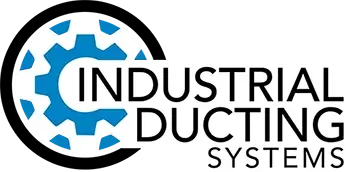Pharmaceutical & Life Science Manufacturing Ducting Solutions
Pharmaceutical and life science manufacturing represents one of the most demanding applications for industrial ventilation systems, requiring precise control of airborne contaminants to protect both workers and products. These facilities handle potent compounds, biological materials, and hazardous chemicals that can pose serious health risks at extremely low concentrations.
Modern pharmaceutical manufacturing involves complex processes including chemical synthesis, fermentation, tablet compression, coating, and packaging operations. Each process presents unique containment challenges, from highly potent active pharmaceutical ingredients (APIs) that require containment at microgram levels to biological materials that may pose infectious disease risks.
FDA, DEA, and other regulatory agencies maintain strict oversight of the industry, mandating extensive contamination control protocols. Recent trends toward personalized medicine and biologics have introduced new manufacturing processes that may generate previously unencountered airborne contaminants requiring specialized handling approaches.
Specific Air Quality Requirements & Regulations
Pharmaceutical manufacturers must comply with FDA Current Good Manufacturing Practice (cGMP) regulations (21 CFR 211) that establish comprehensive contamination control requirements. These regulations mandate that facilities prevent contamination through appropriate air handling systems and environmental controls.
OSHA's occupational exposure limits apply to pharmaceutical manufacturing, with additional considerations for highly potent compounds that may require exposure controls below standard limits. Some facilities must comply with specialized standards for handling controlled substances under DEA regulations.
International standards including ICH Q7 (Good Manufacturing Practice for Active Pharmaceutical Ingredients) and ISO 14644 (Cleanrooms and Associated Controlled Environments) establish specific requirements for air quality management in pharmaceutical manufacturing.
Temperature and humidity control are critical in pharmaceutical manufacturing, with many processes requiring precise environmental conditions. Cleanroom applications typically require 68-72°F and 45-65% relative humidity, while some processes may require more stringent controls.
Construction Process & System Design Considerations
Pharmaceutical manufacturing facilities require the most sophisticated ventilation systems in industrial applications, often incorporating cleanroom design principles throughout the facility. Construction must utilize materials and methods that meet pharmaceutical industry standards for cleanliness and contamination control.
Ductwork design must incorporate features that prevent cross-contamination between various products and processes. This often requires dedicated systems for different product lines and sophisticated isolation measures including airlocks and pressure cascades.
Installation must maintain strict contamination control throughout the construction process, often requiring specialized procedures and materials. Temporary containment systems may be necessary during construction to maintain production in adjacent areas.
Containment systems for highly potent compounds may require specialized designs including glove boxes, isolators, and negative pressure systems with multiple stages of filtration. These systems must be integrated into the overall facility design while maintaining operational efficiency.
Technical Specifications & Performance Requirements
Pharmaceutical manufacturing ventilation systems typically require 50,000 to 500,000 CFM depending on facility size and cleanliness requirements. Cleanroom applications may require 10-20 air changes per hour, while containment applications may require even higher rates.
Ductwork materials must meet pharmaceutical industry standards for cleanliness and chemical resistance. Stainless steel (316L) is preferred for most applications, with electropolished surfaces for critical areas. All materials must be compatible with cleaning agents and sanitization procedures.
Filtration requirements are extremely stringent, typically requiring HEPA or ULPA filtration for final air delivery. Static pressure requirements can exceed 10 inches of water column due to high-efficiency filtration and complex ductwork configurations.
Containment systems for highly potent compounds may require specialized design features including continuous welded construction, leak testing capabilities, and integrated decontamination systems. These systems must maintain negative pressure while providing operator protection.
How Industrial Ducting Systems Delivers Solutions
Industrial Ducting Systems brings specialized expertise to pharmaceutical and life science manufacturing, understanding the critical importance of contamination control and regulatory compliance. Our comprehensive approach addresses both product protection and worker safety requirements.
Our 2D CAD design services provide detailed system layouts that integrate with your facility's cleanroom and containment requirements. We understand the complex airflow patterns and pressure relationships required for pharmaceutical manufacturing.
Our material expertise ensures proper selection of pharmaceutical-grade materials that meet industry standards for chemical resistance. We provide comprehensive quantity take-offs that account for specialized construction methods and high-quality materials required for pharmaceutical applications.
Our logistics coordination addresses the unique challenges of pharmaceutical manufacturing, understanding that contamination control must be maintained throughout the installation process. We provide specialized installation approaches that protect both existing operations and new construction areas.
Experience the Industrial Ducting Systems Advantage
Cleanroom construction, containment expertise, cGMP compliance—discover why pharmaceutical manufacturers trust us with their most critical contamination control and safety challenges. Let's design a system that exceeds your expectations.
